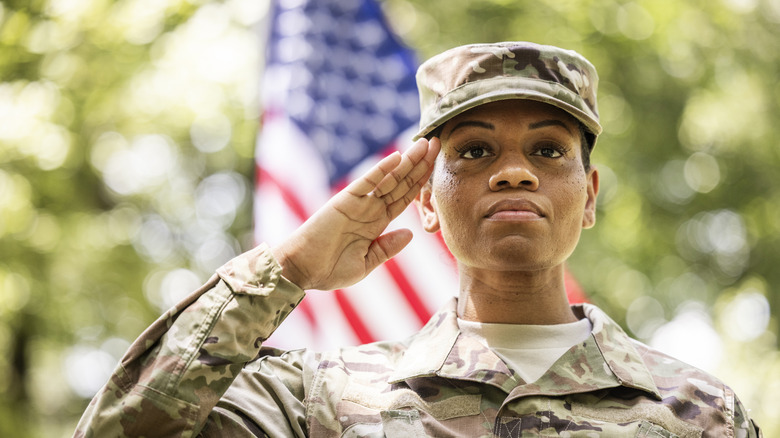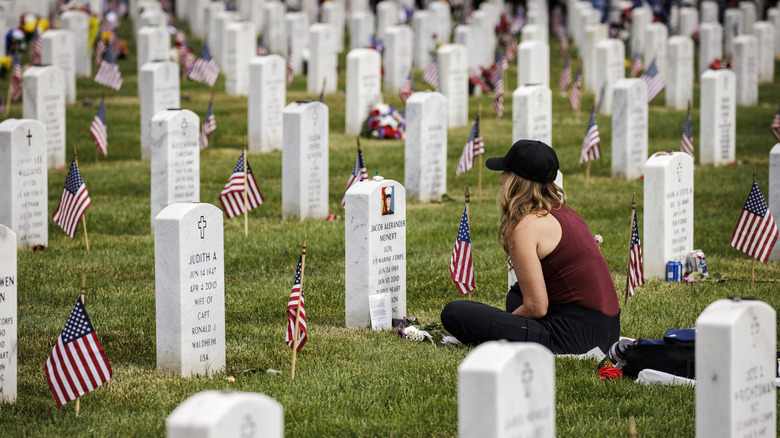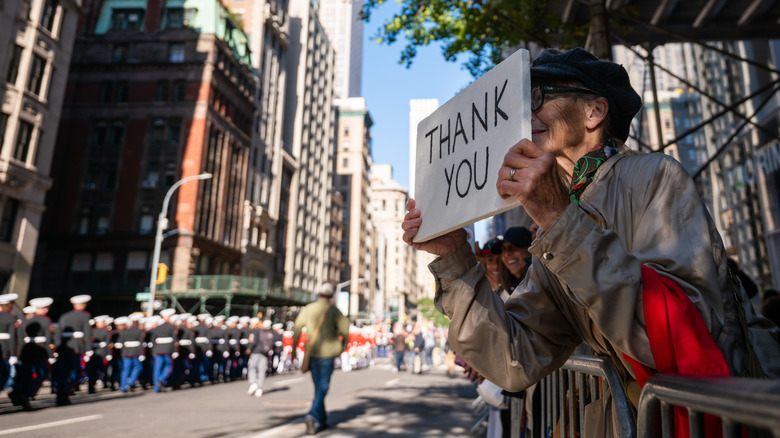What's The Difference Between Memorial Day And Veterans Day?
Veterans Day and Memorial Day are both federally recognized holidays that honor those who have served in the U.S. military. Both were inspired in the aftermath of major wars that left deep scars on the nation, and both started out differently than how we know them today. But there are also differences. One of the biggest distinctions is that one is dedicated to the dead, while the other is more to appreciate the service of the living.
Memorial Day is an observance of people who lost their lives during their military service. Oftentimes, that means they died during a war, but it also includes anyone who died due to their military jobs off the battlefield. Meanwhile, Veterans Day is meant to pay thanks to those who have ever served in the military, whether in peace or wartime, alive or dead. It's easy enough to get them confused since both have to do with honoring members of the military, but both have unique origins and purposes. Let's take a deeper look.
Memorial Day began as a grassroots effort after the Civil War
Memorial Day falls on the last Monday in May, and it began with the estimated 620,000 Americans who died in the Civil War. After four years of bloody fighting between the North and the South, the conflict finally ended in April 1865. But those left living likely struggled to find peace due to the devastating loss of life and mental and physical injury. To honor their loved ones, people in various states began adorning their graves with flowers in the springtime. The sentiment spread, and by 1868, Americans observed the first Decoration Day at Arlington National Cemetery. Specifically, May 30th was officially deemed the day to carry on the new tradition of decorating the graves of fallen soldiers with flowers.
The tradition broadened after World War I with the arrival of the Unknown Soldier in 1921 at Arlington's Memorial Amphitheater. The structure was built to accommodate the large number of people who came to pay their respects every May. The anonymous man's tomb eventually became symbolic of anyone who lost their life in battle, and it continues to be an important part of Memorial Day services today.
In 1971, the day of remembrance was written into law to fall on the last Monday of May and to include soldiers from all wars. Ways to observe the holiday include placing flowers on a fallen soldier's grave, participating in the national 3 p.m. moment of silence for one minute (your local time), or wearing a red poppy flower in honor of those who perished, which symbolizes respect and gratitude for their sacrifice.
Veterans Day was originally called Armistice Day and only honored WWI Vets
While Memorial Day grew out of the Civil War, Veterans Day was initially known as Armistice Day, and its origins are in World War I. The conflict officially ended on June 28, 1919 with the signing of the Treaty of Versailles, but a ceasefire was called the year prior on November 11, 1918. "The eleventh hour of the eleventh day of the eleventh month," as told by the U.S. Department of Veterans Affairs (USVDA), and that's the day that was decided upon to be commemorated as "the war to end all wars." The day honored all who fought in World War I, both dead and living. However, it was a day of celebration, including parades and business closures.
In 1938, November 11 was decreed to be a federal holiday, though it was still called Armistice Day and was still specific to World War I vets. It was also "dedicated to the cause of world peace," per the USDVA. Yet the world would not know peace in the coming years. Finally, in 1954, just before America's involvement in World War II ended in 1945 — and just off the heels of the Korean War, which was over in 1953 — President Dwight Eisenhower proclaimed November 11 to be changed from "Armistice Day" to "Veterans Day." It now included all who served in any branch of the military, in times of peace or in times of war. On Veterans Day, it's customary to thank veterans for their service, but you can also ask them about their time and experience in the military, if appropriate. Many people fly American flags, go to a parade, or donate or volunteer with an organization that works to better the lives of veterans.


